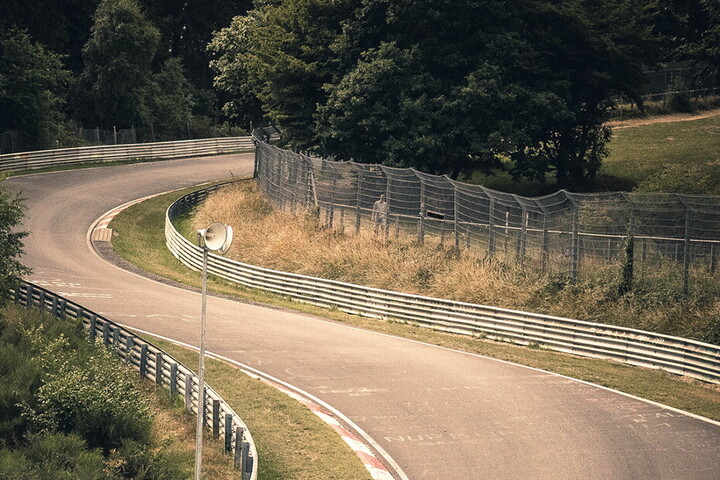After double world champion Fernando Alonso swapped F1 for IndyCar, Ben Webb ponders which car would win a head-to-head race

If the Monaco Grand Prix exemplifies Formula One – being a street race among the casinos and hotels enjoyed by high-rolling millionaires and movie stars, beside the shimmering Mediterranean Sea – then the Indy500 sums up America's IndyCar series. It's a gruelling 500-mile marathon around the 2.5-mile oval at the Indianapolis Motor Speedway on the Midwestern plain.
The contrast is sharp, as double F1 world champion Fernando Alonso discovered when he decided to test himself driving a new design of car on a new kind of track. Gil De Ferran, the 2003 Indy500 winner, gave him an insight. “The car feels like you are driving on an ice road at 230mph,” he said. “It is very, very little grip and very, very little margin."
Sadly, after driving nose-to-tail for 200 miles Alonso's engine failed when he was lying in seventh place, but as he climbed out of the car he discovered he'd made a lot of new friends for having the bravery to try his luck – 300,000 fans roared their appreciation.
And his exploits cast another light on the differing worlds of F1 and IndyCar. The glitz and glamour of F1 is reflected in the budgets of the leading teams. Ferrari, Mercedes, Red Bull and McLaren each spend more than €400m per season testing, developing and running their cars on sinuous tracks. It's in sharp contrast to the American IndyCar teams that can spend a twentieth of that amount, a sum that might just cover the lavish hospitality budgets of their F1 counterparts.

America takes on the world
The differences in the budgets of these two open-wheel motorsport racing series is partly explained by the fact that Formula One is an international circus that criss-crosses the globe, setting up camp from Baku in Azerbaijan to Yas Marina in Abu Dhabi. In 2016, 22 cars from 11 teams competed at 21 circuits – a huge logistical feat – with more than 400m fans tuning in to watch the show.
The IndyCar series is based purely in the US. The 2016 calendar featured 16 races with 24 cars on the grid – apart from the Indy500, when 34 cars are running at the so-called Brickyard – at blue-collar raceways in the likes of Texas, Sonoma and Pocona. Its popularity is growing, with more than half a million followers engrossed by the wheel-to-wheel action.
While the cars in the two series look almost the same, any similarity is skin deep; the mission is to go faster but below their gleaming sponsorship liveries they are very different animals – a difference that reveals a huge contrast in the ethos and histories of the two sports. The F1 car is bespoke while the IndyCar rival comes off-the-shelf.
Formula for success
Formula One, which began in 1950 with car manufacturers going head-to-head in a series of European races, allows each team to interpret a set of rules and then design the fastest vehicle possible. Speed – both on the road and in the development of new design and technology – is everything.
The cars are in contact with the track using the same Pirelli tyres and some share power units, gearboxes and brakes, but everything else is bespoke to the team. In their wind tunnels and Nasa-esque R&D facilities they spend millions to be the best and shave thousandths of a second from lap times.
To win the championship, each team is in a perpetual race to improve the car's chassis, aerodynamics and a hi-tech array of other vital internal components. The technical gurus who oversee the design of a car are stars of the sport in their own right. It is this hard-edged, no compromise approach where money talks that many believe makes Formula One the pinnacle of single-seater racing.
A level playing field
IndyCar has developed into the dominant and most popular form of open-seat auto racing in the United States, which has a history that stretches back to 1905. It is owned by Hulman & Company, which sets the rules and regulations to ensure both teams and drivers enjoy more equal machinery.
The goal is to create a true test for the driver in each seat on the grid. The result is that all teams use the same chassis – a carbon-fibre Dallara DW12 – and have a choice of two engine suppliers. Big budgets and huge design teams do not guarantee a head start.
Using their data and experience the teams use so-called aero kits to boost performance by creating the most aerodynamic set-up for each race. The result is tweaks to the sidepods, engine cover, rear wheel guards, front and rear-wing main planes and endplates. The nose, mirror housing and roll-hoop fairing are, however, universal. On race day every team and driver has a realistic chance of victory.
Head-to-head
A comparison of engine performance between the two disciplines reveals that the F1 car has a slight advantage. In 2014 it entered a new era with the introduction of 1.6-litre V6 turbo engines after traditionally using a V8. They feature direct fuel injection, rev to 15,000rpm and form the power unit, which also includes a hybrid system. Overall the power units comprise the internal combustion engine, turbocharger and Energy Recovery System (ERS).
In 2016 all IndyCars were powered by 2.2-litre turbocharged V6 engines made by Honda or Chevrolet. The engines are electronic direct fuel-injected, rev to 12,000rpm and produce 550-700bhp depending on the turbo boost.
So which car would win a F1 versus IndyCar duel? Although the higher-tech Formula One car would be more powerful, it would depend on the track. On curvy circuits, where fast cornering is critical, the nimble F1 car that generates extraordinary downforce would have an edge. On the unrelenting ovals of America, where top speed is so important, the IndyCar would prevail. Formula One wins the chequered flag at Monaco but the IndyCar wins at Indianapolis.
Let's see the differences between F1 and IndyCar:
F1 cars are good in speedways where the circuit is windier and the throttle needs to be held to get to the finish line, while Indy cars run better in laps where the racer is free to use high speeds, such as Le Mans circuit, the longest one in the World;
The f1 team changes tyres at pit stops in fewer seconds than the Indy team;
Comparisons grow in terms of endurance of the tyres: Indy cars have tyres that last longer than the Formula cars ones, between one pit stop and another;
The super hi-tech gear is an advantage for both of them
IndyCars run and win the Indianapolis 500 (or Indy 500), the automobile race held every year in Indianapolis and run by indy-cars only.





